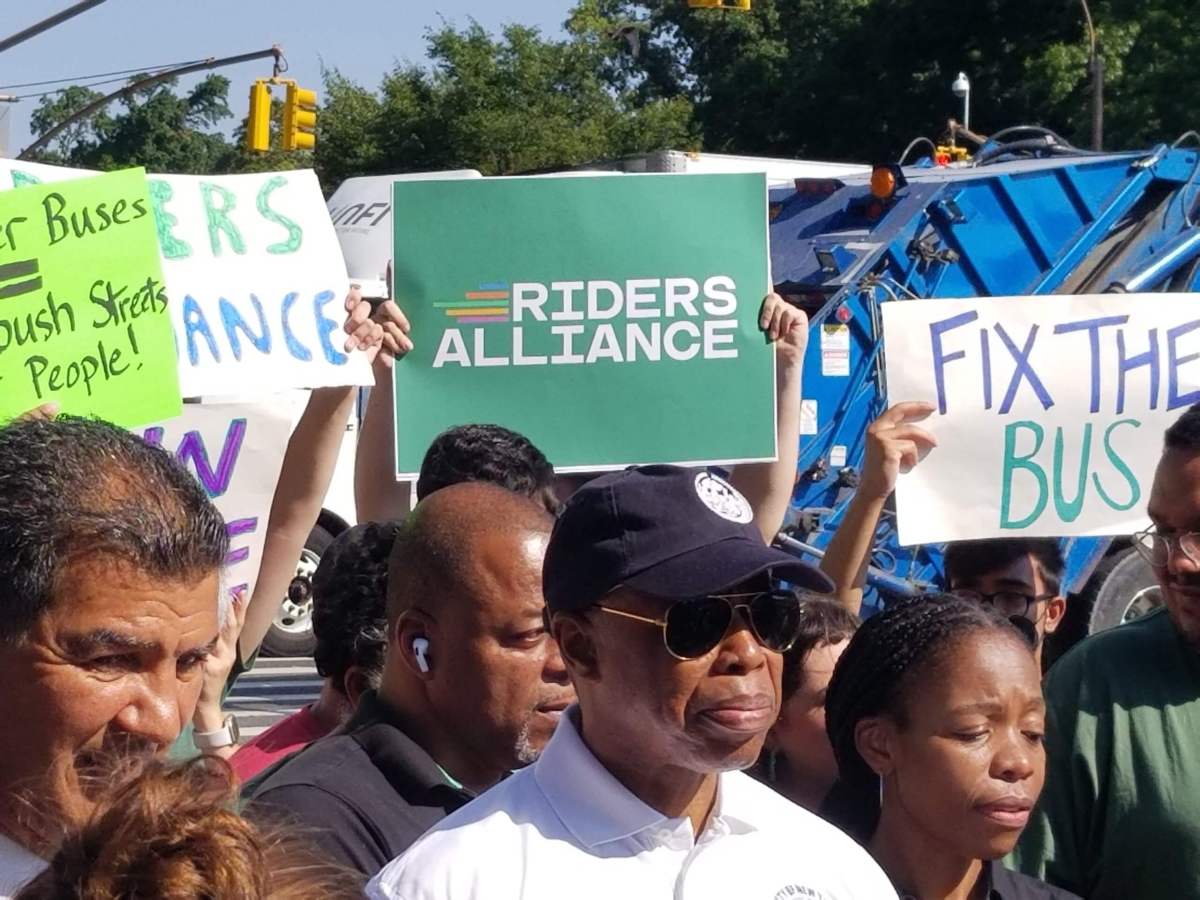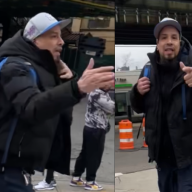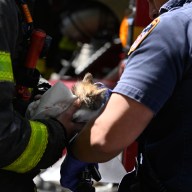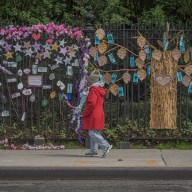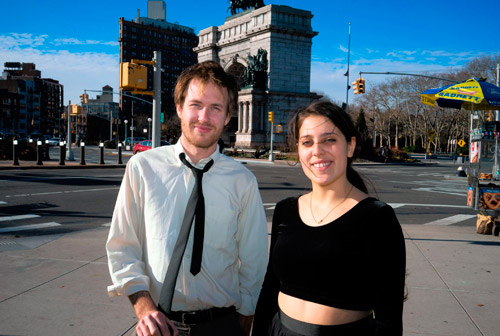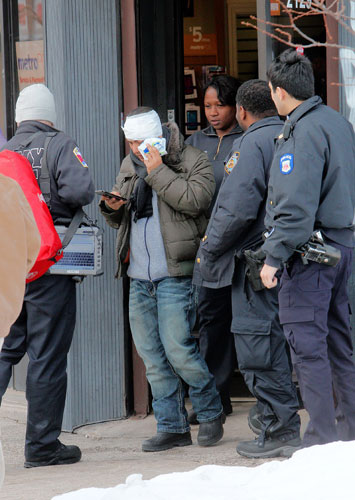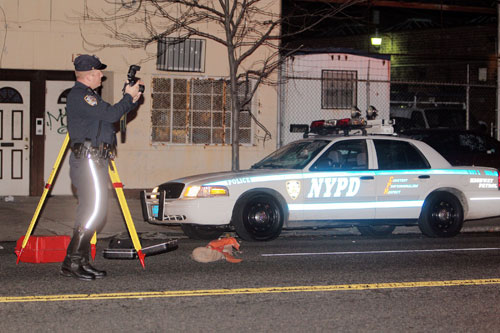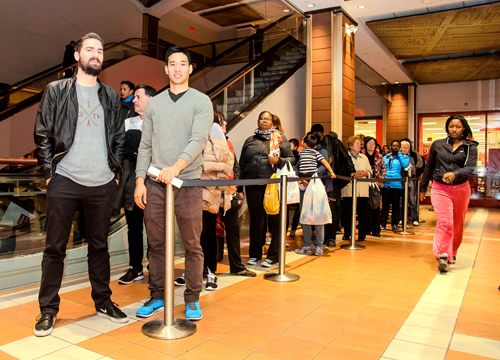The Adams administration’s proposal to build a dedicated bus lane along the length of Flatbush Avenue has gained the support of key elected officials representing communities along the thoroughfare, potentially allowing the administration to quickly shepherd through a major transportation overhaul on Brooklyn’s most important arterial road.
The project, which the administration and Metropolitan Transportation Authority are considering a priority undertaking over the next several years, now has the thumbs up from the politicians representing a substantial chunk of the proposed route, stretching from Tillary Street in Downtown Brooklyn to Avenue V in Marine Park, the advocacy group Riders Alliance announced.
Riders Alliance on Tuesday touted the support of New York City councilmembers Lincoln Restler, Rita Joseph, and Mercedes Narcisse, while a rep for Councilmember Shahana Hanif confirmed to Brooklyn Paper the pol is in support.
Joseph and Narcisse appeared at a Tuesday press conference with Mayor Eric Adams in support of the bus lane, and rode a B41 bus from Marine Park to Prospect Lefferts Gardens with Adams and New York City Transit President Richard Davey, taking the time to speak with aggrieved straphangers along one of the borough’s busiest but least reliable routes.
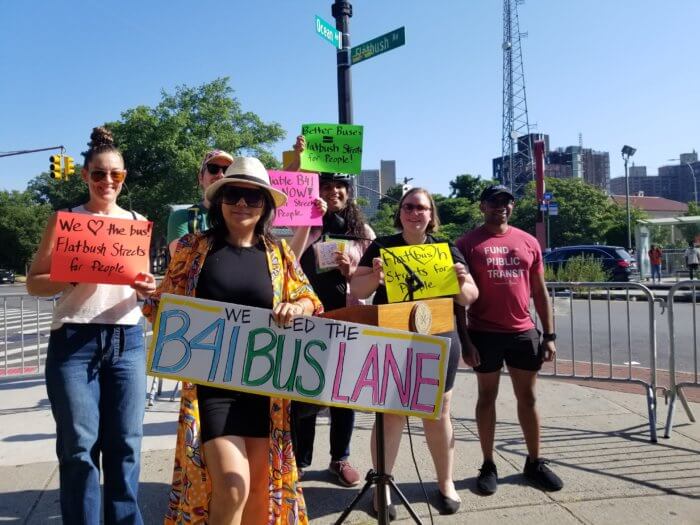
At the press conference Tuesday, Adams framed the Flatbush Avenue proposal as the pillar of his plan to install 150 miles of new bus lanes over the next four years, including 20 miles this year and 30 miles each year starting in 2023.
“Flatbush is an opportunity for transformational change,” Hizzoner said at the corner of Flatbush and Ocean avenues. “The best way to get stuff done is to get our buses moving.”
The plan has been pushed particularly hard by Joseph, who reps PLG and Flatbush at City Hall, and the Riders Alliance, an advocacy group for bus and subway commuters.
The B41, the main bus running along the length of Flatbush Avenue from Downtown Brooklyn to Marine Park, had the seventh-highest pre-pandemic annual ridership of any bus line in Brooklyn, with 7.4 million riders using it in 2019 and an average weekday ridership of 22,553, according to MTA statistics.
But the journey along Flatbush is typically a sluggish one, with the B41 puttering along at a paltry average speed of 6.5 miles-per-hour, well below the already-low average bus speeds in Brooklyn and citywide. This week, the B41 was named the sixth “Schleppiest” bus in the city by the Straphangers Campaign, which noted that 1 in 6 buses along the route are observed to be “bunching” — or showing up at a stop all at once after a long wait, rather than arriving at regular intervals.
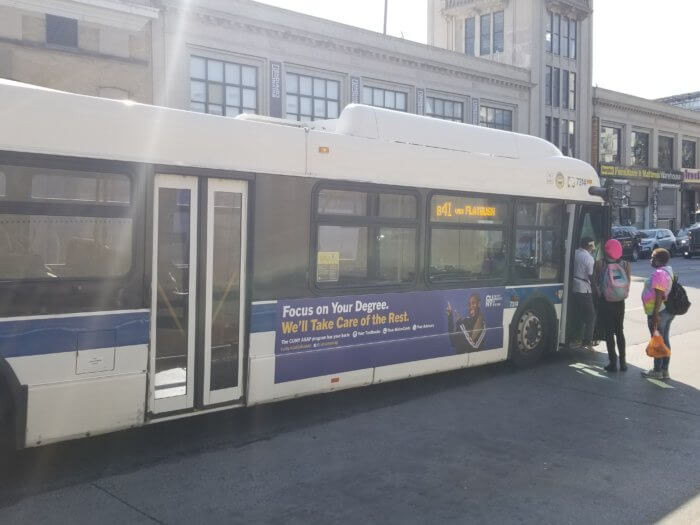
So miserable is a commute on the B41 that for years, the MTA has had to compete with hordes of dollar vans that can travel faster, arrive more frequently, and drop passengers off anywhere; while they no longer actually cost $1, they still generally charge less than a $2.75 MetroCard swipe. The volume of dollar vans has only made it harder for MTA buses to complete routes in a timely fashion, and some hope that a bus lane may help put the vans out to pasture.
“We believe if the transportation is in a timely fashion, we will not have so many illegal buses coming around,” Narcisse told Brooklyn Paper.
The support of pols repping the corridor will likely lubricate what will almost certainly be a long and arduous journey through the community engagement process. The city’s Department of Transportation has already started holding engagement meetings with local community members, and Hizzoner said that he and members of his administration will start conducting unpublicized bus rides to query riders on how they can do better.
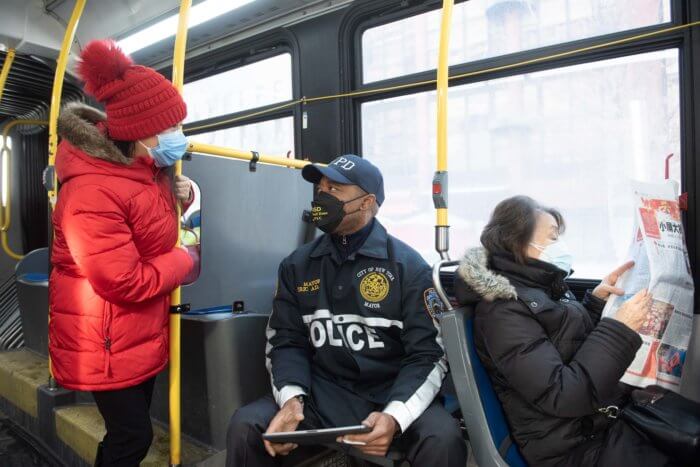
The proposal will also have to pass muster with the many community boards along the corridor, where similar projects have faced criticism for cutting down on parking spaces.
Restler, Hanif, Joseph, and Narcisse represent a decent chunk of the route, and the associated community boards, but some councilmembers have yet to take a position one way or another. Reps for Councilmembers Crystal Hudson and Farah Louis did not respond to requests for comment by press time.
Nevertheless, DOT Commissioner Ydanis Rodriguez told Brooklyn Paper that while he and the mayor have great respect for the volunteers serving on community boards, at the end of the day their role is only advisory, suggesting the administration may be willing to buck CBs that give the plan a thumbs-down.
“Most members of community boards, they take their jobs very seriously. But their role is only advisory,” Rodriguez said. “So we already are doing the job, we’re taking the feedback, hearing from everyone. But most importantly, we want to hear what the riders want.”
Narcisse said that while she expects some backlash from her car-driving constituents, she ultimately expects people to get on board with a faster commute from her district to Downtown Brooklyn and points beyond.
“Some may complain, but Flatbush is an essential flow for our buses. People are suffering waiting 30 minutes, 40 minutes, it’s unfair to the riders as well,” she said. “For Flatbush Avenue, I think it is imperative for us to have a fast way of transportation from Point A to Point B.”


